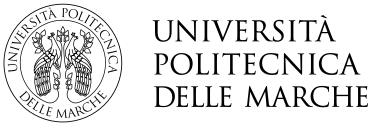This study focused on the analysis of 42 tiles (artificial substrates) distributed in a submerged structure along the Costa Dorada (Catalonia, Spain) over a three-year period (2020-2023). The research involved several assessments, including the evaluation of the associated biodiversity, the colonization status (understood as the colonization stages of the organisms on the tiles), an estimate of the carbon immobilized (g CaCO3 m-2) by the organisms that colonized the tiles and analyses of the structural complexity (zero, two-dimensional and three-dimensional) and its relationship with the number of decapods. The main objective was to analyze the effectiveness of the tiles as a unique structure in these aspects. Various methodologies were used, ranging from visual assessments of photographs of the tiles for biodiversity assessment to laboratory analyses to quantify the carbon sequestered. All the resulting data were subjected to statistical analysis (RStudio) to confirm and validate the conclusions related to the tiles. The results revealed a significant biodiversity, confirmed by the Shannon index, with a particular abundance of polychaetes (Annelida). The colonization status of organisms on the tiles was found to be aligned with the immersion period. Statistical analysis of the relationship between complexity and decapod abundance confirmed an increase in the number of decapods related to greater complexity. In conclusion, the various assessments demonstrated that the tiles were an efficient substrate, attracting a remarkable diversity of species and showing a strong potential for carbon sequestration. This study also included monitoring activities related to artificial structures for a project still under study owned by Underwater Gardens International (UGI), at the Port Olímpic in Barcelona, in collaboration with their team of marine biologists.
Questo studio si è concentrato sull'analisi di 42 piastrelle (substrati artificiali) distribuite in una struttura sommersa lungo la Costa Dorada (Catalogna, Spagna) per un periodo di tre anni (2020-2023). La ricerca ha coinvolto diverse valutazioni, tra cui la valutazione della biodiversità associata, lo stato di colonizzazione (inteso come le fasi di colonizzazione degli organismi sulle piastrelle), una stima del carbonio immobilizzato (g CaCO3 m-2) dagli organismi che hanno colonizzato le piastrelle e analisi della complessità strutturale (zero, bidimensionale e tridimensionale) e la sua relazione con il numero di decapodi. L'obiettivo principale era analizzare l'efficacia delle piastrelle come struttura unica in questi aspetti. Sono state utilizzate varie metodologie, che vanno dalle valutazioni visive delle fotografie delle piastrelle per la valutazione della biodiversità a analisi di laboratorio per quantificare il carbonio sequestrato. Tutti i dati risultanti sono stati sottoposti ad analisi statistiche (RStudio) per confermare e validare le conclusioni relative alle piastrelle. I risultati hanno rivelato una biodiversità significativa, confermata dall'indice di Shannon, con una particolare abbondanza di policheti (Annelida). Lo stato di colonizzazione degli organismi sulle piastrelle è stato trovato allineato con il periodo di immersione. L'analisi statistica della relazione tra complessità e abbondanza di decapodi ha confermato un aumento del numero di decapodi in relazione alla maggiore complessità. In conclusione, le varie valutazioni hanno dimostrato che le piastrelle sono un substrato efficiente, attirando una notevole diversità di specie e mostrando un forte potenziale di sequestro del carbonio. Questo studio ha incluso anche attività di monitoraggio relative a strutture artificiali per un progetto ancora in fase di studio di proprietà di Underwater Gardens International (UGI), presso il Port Olímpic di Barcellona, in collaborazione con il loro team di biologi marini.
RIGENERAZIONE DELL'ECOSISTEMA MARINO, ANALISI DELLE FASI INZIALI DI COLONIZZAZIONE BENTONICA DI SUBSTRATI ARTIFICIALI: CASO STUDIO LUNGO LA COSTA CATALANA, (SPAGNA)
PESTILLO, AGNESE
2023/2024
Abstract
This study focused on the analysis of 42 tiles (artificial substrates) distributed in a submerged structure along the Costa Dorada (Catalonia, Spain) over a three-year period (2020-2023). The research involved several assessments, including the evaluation of the associated biodiversity, the colonization status (understood as the colonization stages of the organisms on the tiles), an estimate of the carbon immobilized (g CaCO3 m-2) by the organisms that colonized the tiles and analyses of the structural complexity (zero, two-dimensional and three-dimensional) and its relationship with the number of decapods. The main objective was to analyze the effectiveness of the tiles as a unique structure in these aspects. Various methodologies were used, ranging from visual assessments of photographs of the tiles for biodiversity assessment to laboratory analyses to quantify the carbon sequestered. All the resulting data were subjected to statistical analysis (RStudio) to confirm and validate the conclusions related to the tiles. The results revealed a significant biodiversity, confirmed by the Shannon index, with a particular abundance of polychaetes (Annelida). The colonization status of organisms on the tiles was found to be aligned with the immersion period. Statistical analysis of the relationship between complexity and decapod abundance confirmed an increase in the number of decapods related to greater complexity. In conclusion, the various assessments demonstrated that the tiles were an efficient substrate, attracting a remarkable diversity of species and showing a strong potential for carbon sequestration. This study also included monitoring activities related to artificial structures for a project still under study owned by Underwater Gardens International (UGI), at the Port Olímpic in Barcelona, in collaboration with their team of marine biologists.| File | Dimensione | Formato | |
|---|---|---|---|
|
Tesi_Agnese_Pestillo_S1109069_DEFINITIVA_pdfA.pdf
embargo fino al 21/08/2026
Descrizione: Tesi di Laurea Magistrale Agnese Pestillo con riassunto esteso
Dimensione
1.49 MB
Formato
Adobe PDF
|
1.49 MB | Adobe PDF |
I documenti in UNITESI sono protetti da copyright e tutti i diritti sono riservati, salvo diversa indicazione.
https://hdl.handle.net/20.500.12075/21066
